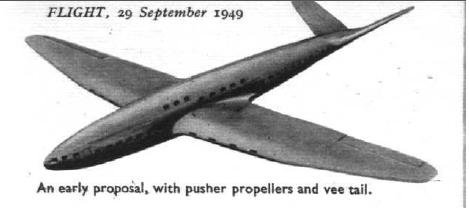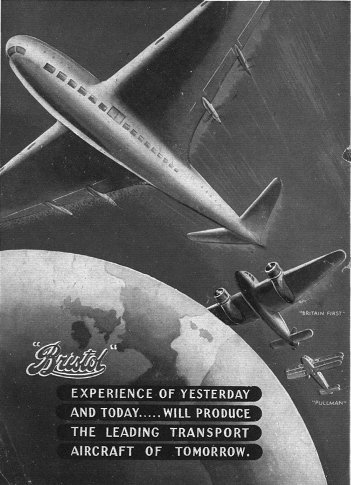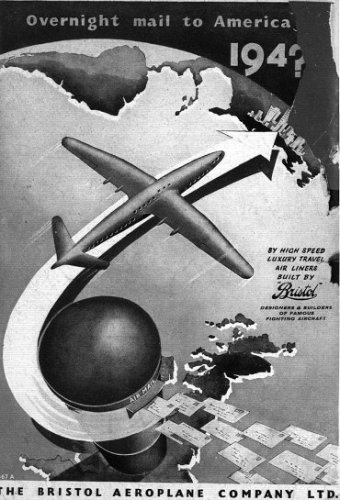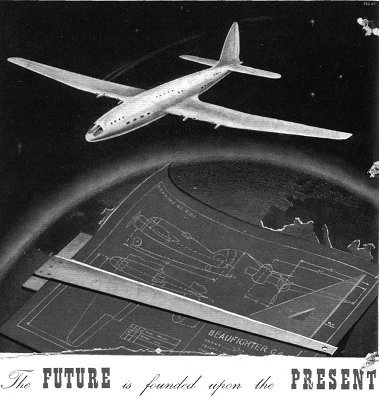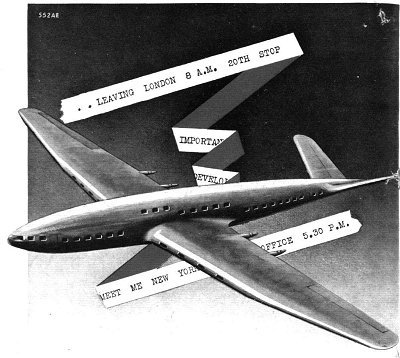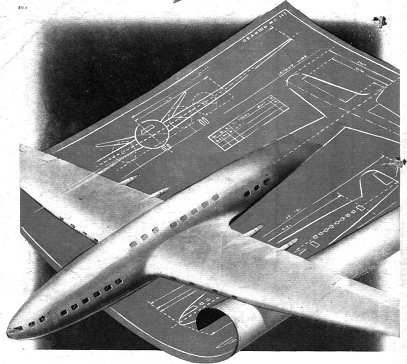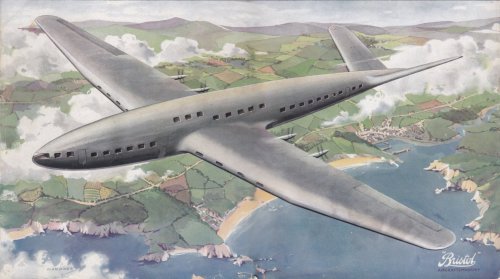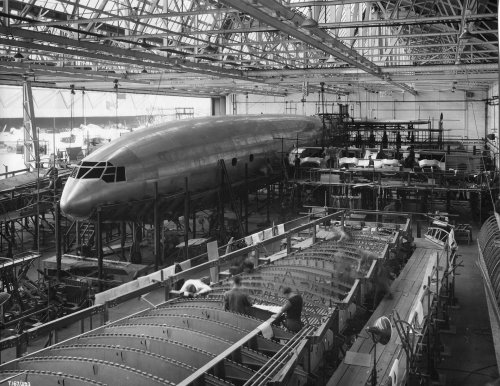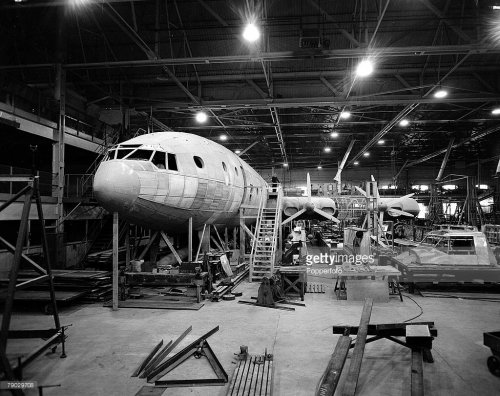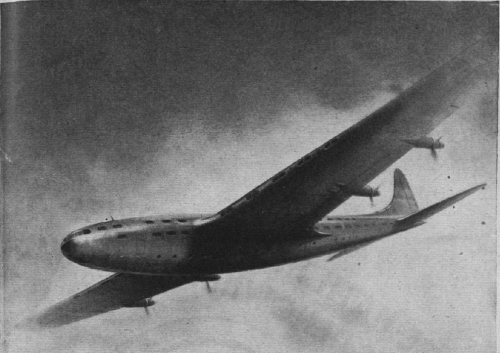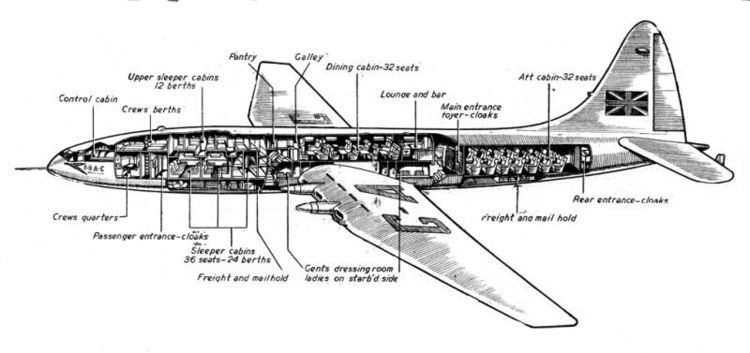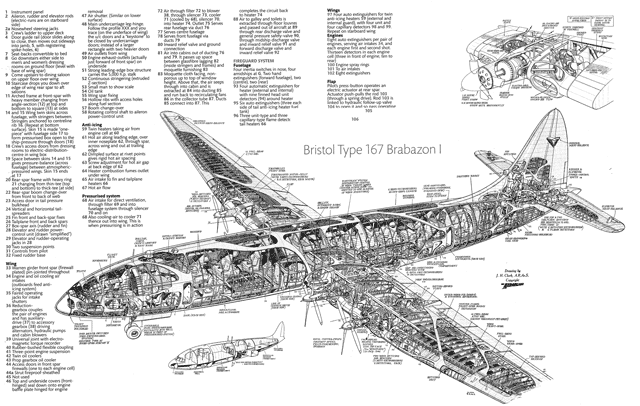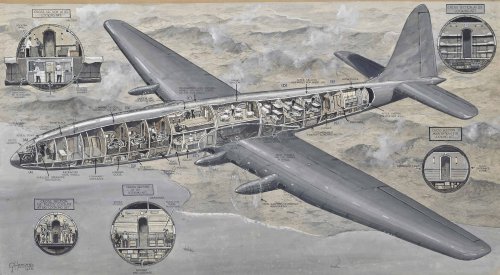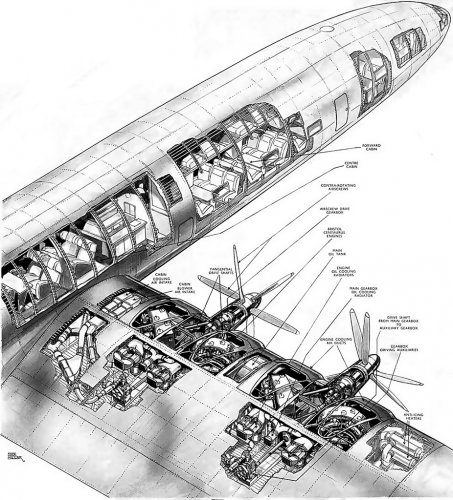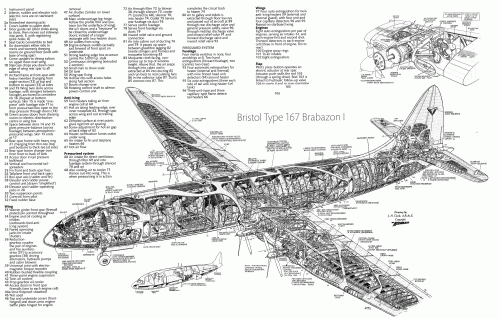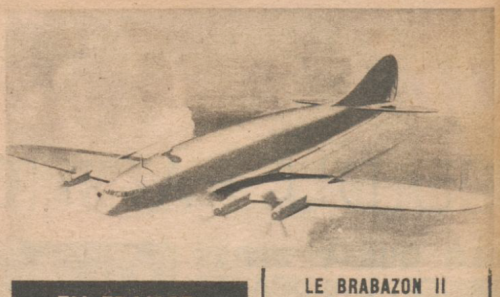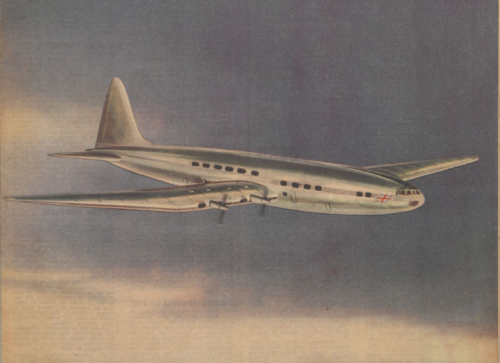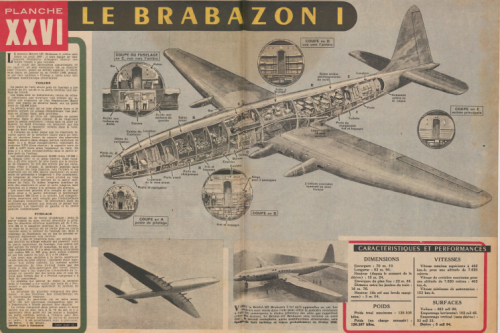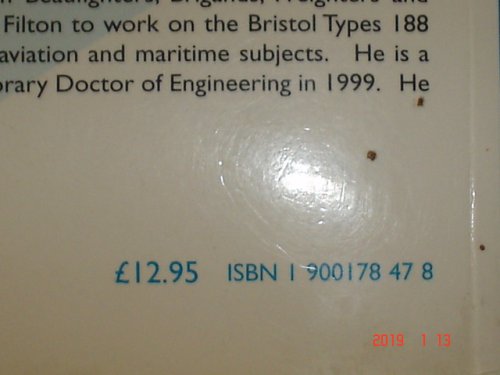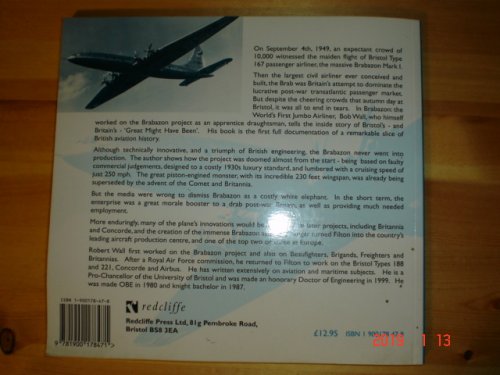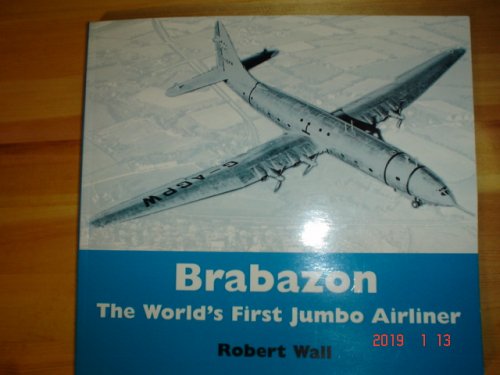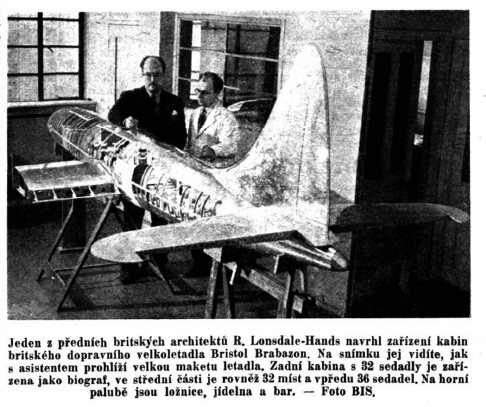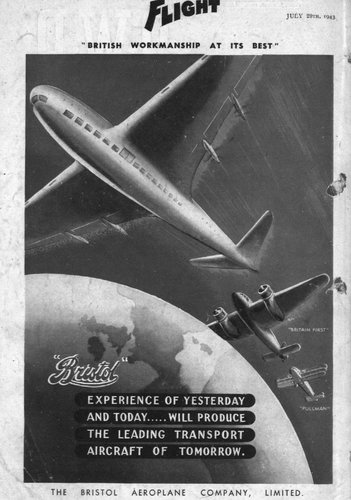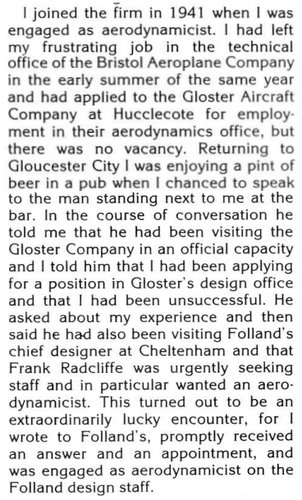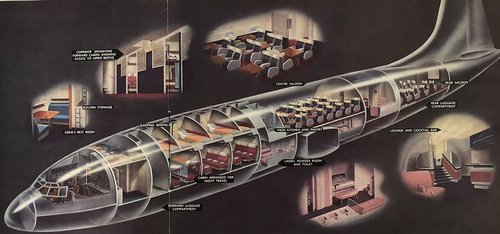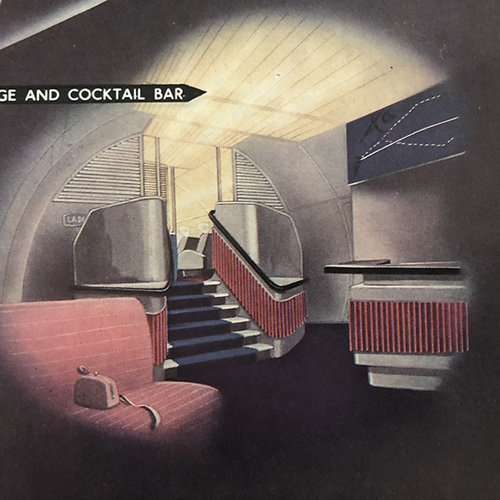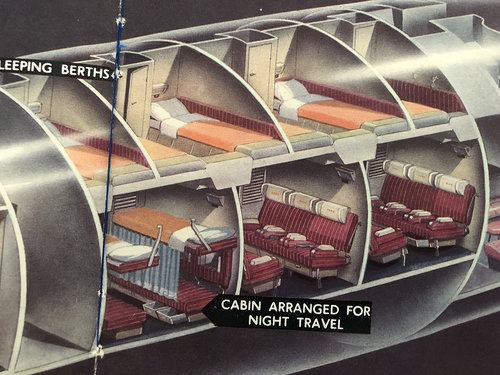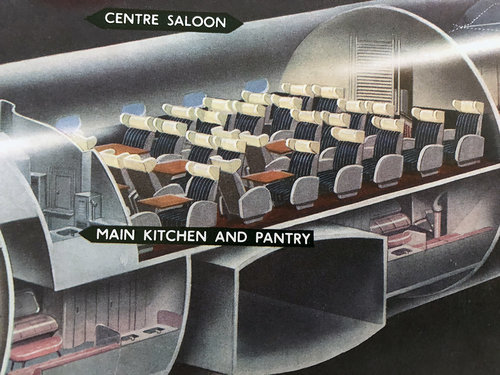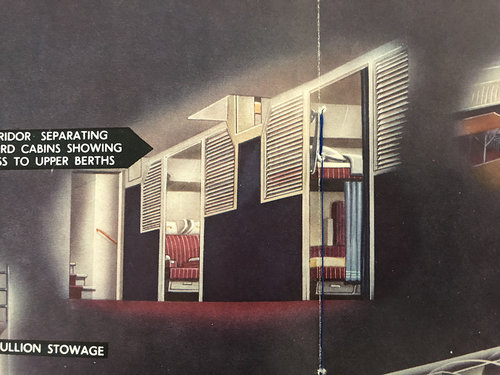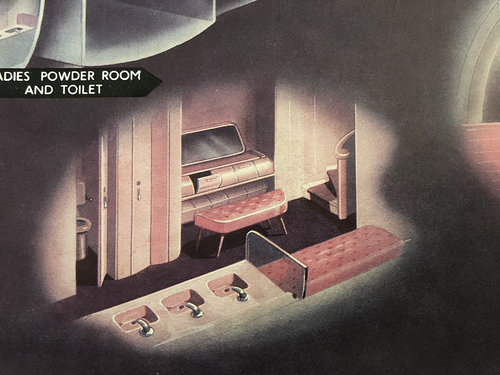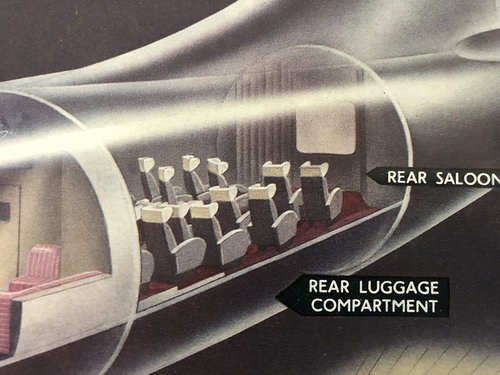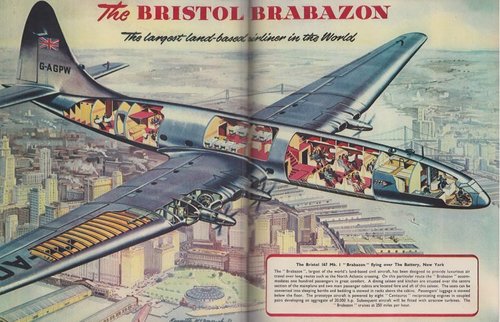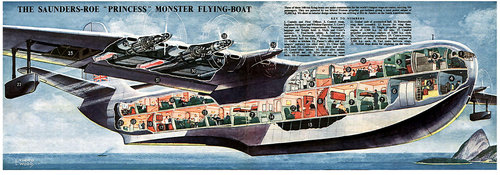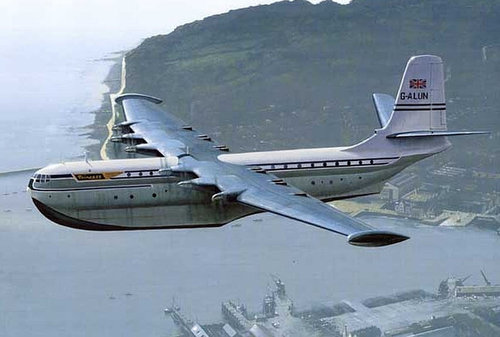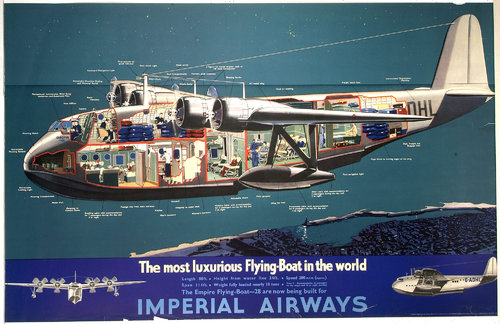#4 #18. There are similar conceptual ads, 1944/45 for Saro's (to be) Princess Transatlantic boat. Why? Then, as now, firms' spend on marketing is excluded from recovery across Ministry cost-plus contract prices, so this spend comes straight off bottom line profit. Why bother? Who in 1944 was inspired to place a deposit to secure a delivery position?
So: ?propaganda? "Look here, Axis, we are so confident of Victory that we can doodle this stuff". "Look here, USA, when this unpleasantness is over we will be coming for you, C-54, C-69 &tc, with these splendid competitors". #18, 7/43, was whistling in the dark: Churchill said 12/42's halting of the thrusts, Alamein and Stalingrad, onto ME oil, was "not the beginning of the end, but maybe the end of the beginning", but when this ad was drawn we were still in dire straits in the Battles of the Atlantic and Arctic.
Or disinformation for the enemies? "If you think the current Heavy Bomber Offensives are bad, just think what's onway disguised behind these high payload civil schemes".
Bristol, and others had presented 100ton Bomber schemes, 10/42, just as Stafford Cripps was sent to the Ministry of Aircraft Production to break the delays in delivering Stirling/Halifax/Lancaster Heavies. He Nationalised Shorts, 23/3/43 and displaced them, with AWA, in management of Stirling production (outside Belfast); other firms were displaced from their own Works by his imposition of Authorised Controllers, to get product out the door. Cripps was in no mood to divert firms with distant pipe dreams, so chopped the 100ton Bomber.
But Bristol's Experimental Dept. was merely messing with feeble also-rans to Mosquito and he was a Bristol MP. He obtained Cabinet Approval to fund 11/3/43 Study of Brabazon Committee's 9/2/43 Type I, using their butterfly 100ton as baseline. Bristol's ignorance of large, pressurised structure was a positive advantage because proper firms, dilatory on Heavies, could not be spared. This ad was a way of telling Avro/HP/Short/Vickers to get their houses in order if you, too, would like such work in Peace.

